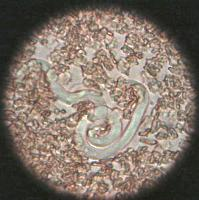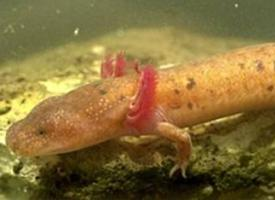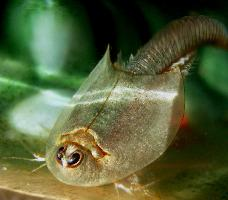
Váhy a míry
| Délka | od 12 do 31 cm |
|---|
Popis zvířete
Dirofilaria immitis, commonly known as heartworm, is a parasitic roundworm that has garnered significant attention due to its impact on pets, particularly dogs, as well as cats and ferrets, and in rare cases, it can affect humans. This parasite is named for its preference for the heart and pulmonary arteries where it resides, matures, and reproduces, leading to severe health complications and potentially fatal outcomes if left untreated.The life cycle of Dirofilaria immitis is complex, involving mosquitoes as the essential intermediate hosts and vectors. The process begins when a mosquito feeds on an infected host, ingesting microfilariae — the larval stage of heartworms — circulating in the host's bloodstream. Within the mosquito, these microfilariae develop into infective larvae over a period of 10 to 14 days, depending on environmental conditions, particularly temperature. When this infected mosquito bites another host, the infective larvae are deposited onto the skin and subsequently enter the new host's body through the mosquito's bite wound.
Once inside the host, the larvae migrate through the body, eventually reaching the heart and pulmonary arteries. This journey can take approximately six months, during which the larvae mature into adult heartworms. Adult heartworms can grow to significant lengths, with males reaching about 12 to 16 centimeters and females extending up to 25 to 30 centimeters. These adults can live for 5 to 7 years in dogs, with the number of worms in an infected animal varying greatly.
The presence of heartworms in the cardiovascular system can lead to a myriad of health issues, primarily affecting the heart, lungs, and blood vessels. In the early stages of infection, animals may show no signs, but as the disease progresses, symptoms can include a persistent cough, fatigue, decreased appetite, weight loss, and a swollen abdomen due to fluid accumulation. In severe cases, known as caval syndrome, a massive infestation of worms can block the flow of blood to the heart, necessitating immediate surgical intervention to remove the worms.
Diagnosis of heartworm disease involves antigen and antibody tests, along with imaging techniques such as X-rays and echocardiography to assess the extent of heart and lung damage. Prevention, however, is the most effective approach to managing heartworm disease, with various prophylactic medications available that can be administered monthly to kill the larval stages of the worm. These preventive measures are critical, especially in areas where the disease is endemic, to protect pets from this potentially deadly infection.
In conclusion, Dirofilaria immitis represents a significant threat to the health and well-being of many animals, particularly domestic pets. Understanding its life cycle, impact, and the importance of preventive care is essential for pet owners and veterinarians alike to mitigate the risks associated with this parasitic infection.
Podobná zvířata
Nové fotografie zvířat
Top 10 zvířat
- Chinese water dragon (Physignathus cocincinus)
- Galápagos tortoise (Geochelone nigra complex)
- Dolphin gull (Leucophaeus scoresbii)
- Japanese macaque (Macaca fuscata)
- Colombian red howler (Alouatta seniculus)
- Sea urchins (Echinoidea)
- Moustached guenon (Cercopithecus cephus)
- Diana monkey (Cercopithecus diana)
- Common reed warbler (Acrocephalus scirpaceus)
- Common house mosquito (Culex pipiens)


